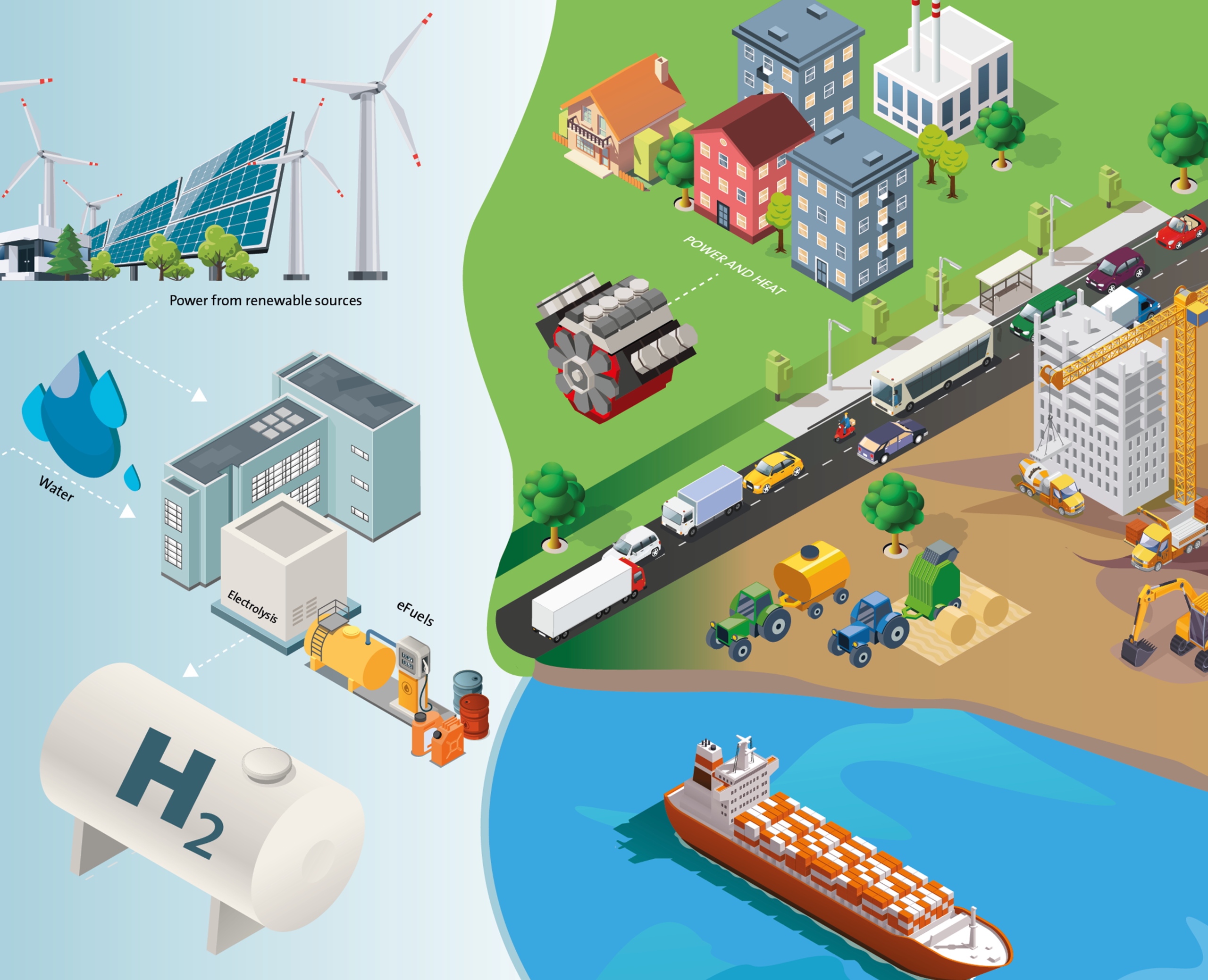Mission 9
Renewable hydrogen is the energy carrier at the very center of CO2-free combustion technologies.
To advance climate protection, emissions of the climate-damaging greenhouse gas CO2 must be reduced quickly and significantly. However, fossil fuels such as oil, gas and coal, which produce many greenhouse gases when burned, are still the mainstay of global energy production and supply. Renewable energies are expected to take over their role more and more. And indeed, in 2023, 52 percent of Germany's gross electricity consumption of around 494 terawatt hours (TWh) already came from renewable sources. However, the so-called primary energy demand is significantly higher. In 2023, it was around 2,982 TWh in Germany.
For the energy turnaround to really succeed, holistic thinking is therefore required. After all, energy is much more than just electricity, and a wide variety of applications must be taken into account. For example, heating and cooling buildings, transporting goods and traffic on water, on land and in the air. There, too, fossil fuels are to be gradually replaced by renewable energy sources. The key to this lies in sector coupling: electricity, heating, transport and industry are viewed holistically and interlinked, and electricity from renewable sources is used everywhere to reduce the use of fossil fuels ever further.
At the heart of this energy system of the future is hydrogen, and in particular "green hydrogen". It is produced by electrolysis of water with electricity from renewable sources. This hydrogen is CO2-free. It can either be used directly or converted further, for example into eFuels, synthetic fuels that can already power combustion engines in a climate-neutral way. Thanks to Power-to-X (P2X), green electricity in the form of chemical energy carriers can be stored efficiently and for a long time.
In many countries, such as China, Japan, and Korea, but also in France and Germany, governments have set the course for future hydrogen use. There is also an ambitious hydrogen strategy at EU level. Hydrogen will also be of great importance for emerging countries that are just establishing their energy supply systems. The World Energy Council predicts that in the future hydrogen will come mainly from countries such as Saudi Arabia, Chile, or Australia – from regions where wind or sun and thus potentially renewable energy are abundant. Countries like Germany, however, will continue to import energy in the future because they consume more energy than they can generate themselves from renewable sources. The question of transportation has not been conclusively resolved since hydrogen as a gas is best transported by pipeline. Thus, for regions like Patagonia, one must also consider conversion steps from hydrogen to ammonia or hydrocarbons – one more reason to consider eFuels as well. Ultimately, innovative hydrogen-based technologies everywhere offer enormous potential to successfully defossilize industries.
Further information:


